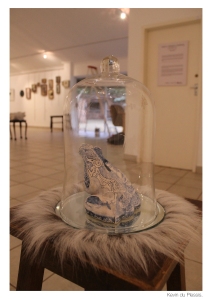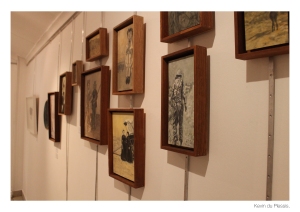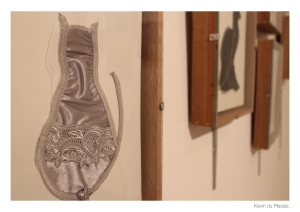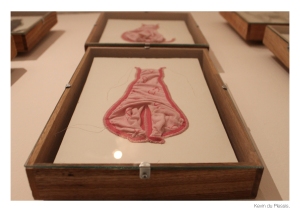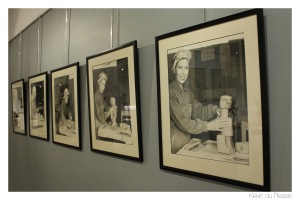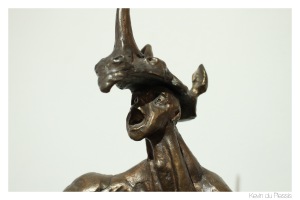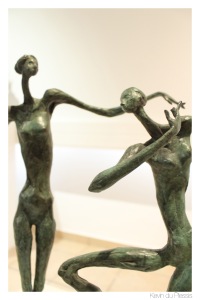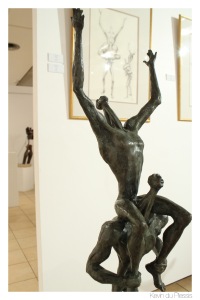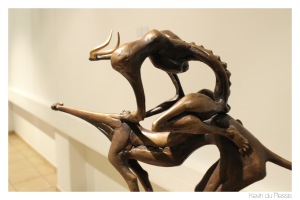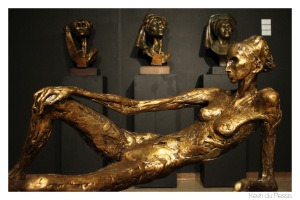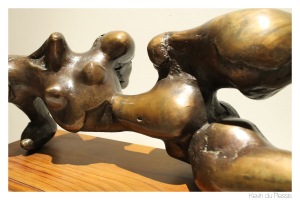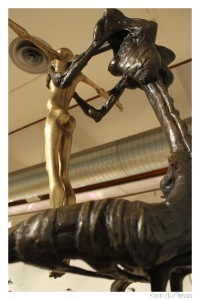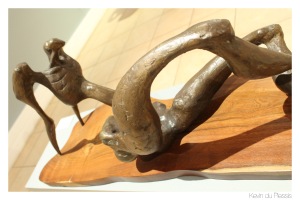Artist Ann-Marie Tully uses a visual and interactive narrative to speak about the serious issue of humankind’s treatment and views of our animal counterparts. Her work is at the same time very humorous while being serious when asking you the question of “now that you know, what do you propose to do?” The awareness that these works evoke from the onlooker changes your views on animals forever.

“The turn of instrumental reason (2014) series of altered sewing machines relates thematically to The Bleek
house focus on the animalisation of difference. Similar to The Bleek house works these mechanical assemblages
feature paintings on the palms of the mannequin hands of animal and therianthropic forms drawn from
San rock paintings; coupled with images of individuals from the colonial African stage. Further to this narrative
element the grafted together ‘machine arm’ and artificial hand evokes: the violent stitch of the sewing machine
(with monstrous surgical inference); industrialisation (the product of enlightenment thinking); histories of western
dominance and exploitation; the punitive violence perpetrated against Africans in the name of industry during
colonial times.
Also significant is the coupling of the feminine hands with the feminine ergonomics of the sewing machines.
This is suggestive of the female hands that these well worn objects (haunted by the marks of past users) were
designed to respond to and enspan. The presence of animal forms on the palms of the hands alludes to the
rationalised binary opposition of nature and culture/industry; and the predjudical association of women with the
‘lesser’form of nature. The animal forms on the part of these mechanically driven hands that would be used to
crush something alludes to the destruction and brutal exploitation of nature by the ‘wheels of industry’.” -from the catalogue Wolf in Sheep’s Clothing.

“Running with the hares and hunting with the hounds.” Tully uses herself as model, note the beautiful technique which leans towards an animal skin.

“Another fucking bunny” is a humorous piece that reflects Tully’s frustration with the world’s and the media’s obsession with the cuteness of bunnies. It is rare that, and this is true for most of her work, you find an artist who deals with such serious issues yet is able to do it in such a light and humorous way without losing any of the weight in the message.

I really like this photograph of me in the reflection of one of the “Where sleeping dogs lie” works also reflecting some of the other works in the exhibition.
!["THE DECORATIVE ANIMAL. The Las Meninas [Ladies in Waiting] series (2010-2012) of cobalt oxide-painted ceramic frog sculptures further reflects on the obscuration of animal beings in human visual culture." -from the catalogue Wolf in Sheep's Clothing.](https://luckynumberkevin.files.wordpress.com/2014/05/wisc20.jpg?w=300&h=212)
“THE DECORATIVE ANIMAL.
The Las Meninas [Ladies in Waiting] series (2010-2012) of cobalt oxide-painted ceramic frog sculptures further reflects on the obscuration of animal beings inhuman visual culture.” -from the catalogue Wolf in Sheep’s Clothing.
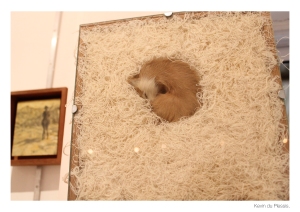
“Cat of nine lives.”
“Artworks such as Dumb Valet (2013), Cat of nine lives (2013), and Heads you win, tails you loose (2014), employ real fur objects, such as toys and clothing; and decorative
furnishings that mimic animal features, such as ball and claw furniture. These assemblages/installations reflect on the reduction of animal beings into objects in human material
culture.” -from the catalogue Wolf in Sheep’s Clothing.

From “Room to Swing a Cat”, three beautiful little works that depict cats flying through the air. Tully refers to the English expression, which to her illustrates well how metaphor in our language usage speak of our almost unawareness of the fact that animals look back at us much in the same way we can see them. Tully said something in the line of “So we have the opposable thumbs, so we are the masters!” Tully has quite a lot to say about our notions of logic and the fact that we deem animals not to possess it, when in fact they do.
I am the lucky owner of one of these paintings.

Tully’s technique in her paintings lend to the images an animalistic feel that I find to be unique to her work. The brushstrokes are especially fur-like and in terms of composition and form everything pulls towards animal-human similarities, atrocities and various other links.
“The Dog—eat—dog (2010-2013) series draws on narratives and idioms that parallel human culture wilth lupine and other animal attributes relating to predatorial and maternal instinct, ferociousness and stealthiness.
Shakespeare’s Marcus Antonius invokes canine ferocity in preparation to strike against Julius Caesar’s assassins, linking notions of aggressive animality to the human practice of war. This aggressive rhetoric also conveniently absolves the ‘civilised’ qualities of human beings from complicity in the atrocities of war:
And Caesar’s spirit, raging for revenge …
Shall in these confines with a monarch’s voice
Cry “Havoc!” and let slip the dogs of war
That this foul deed shall smell above the earth
With carrion men, groaning for burial.
1 William Shakespear’s Julius Caesar,
Act 3, scene 1.”
– drawn from Wolf in Sheep’s Clothing Catalogue.
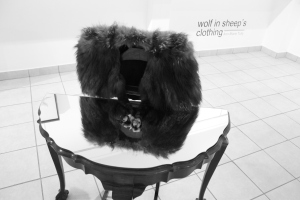
This real fur shawl, as displayed beautifully with the wood furniture and mirror, titled “Dumb Valet” comments on the almost unimaginable fashion trends from decades past where animal skins would be worn as clothes. Note how the traditional ball and claw style furniture compliments Tully’s notions of the way within which human kind views its animal counterpart.
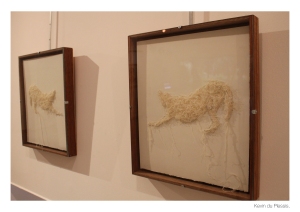
From the series “Fleeced”, Tully uses cotton waste and thread on Fabriano to express the unfeeling victimization of animals in the mass production of animal products and byproducts by the humankind.

